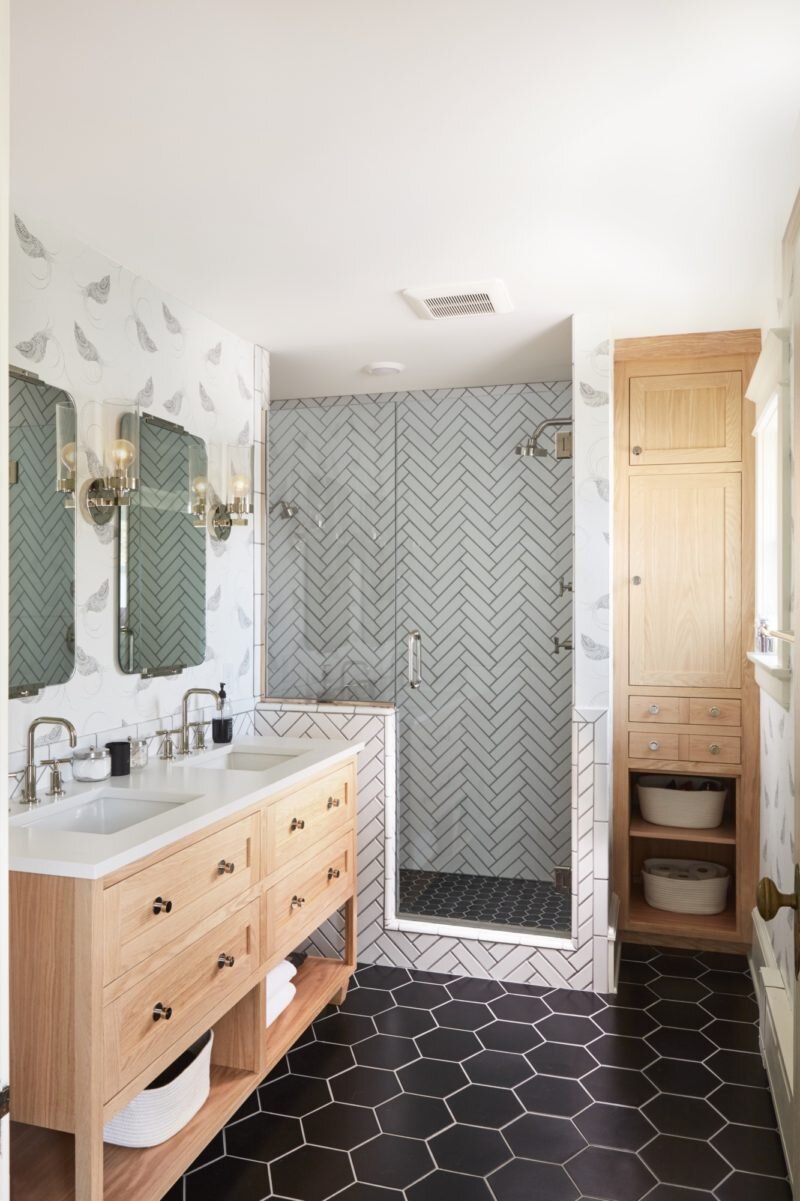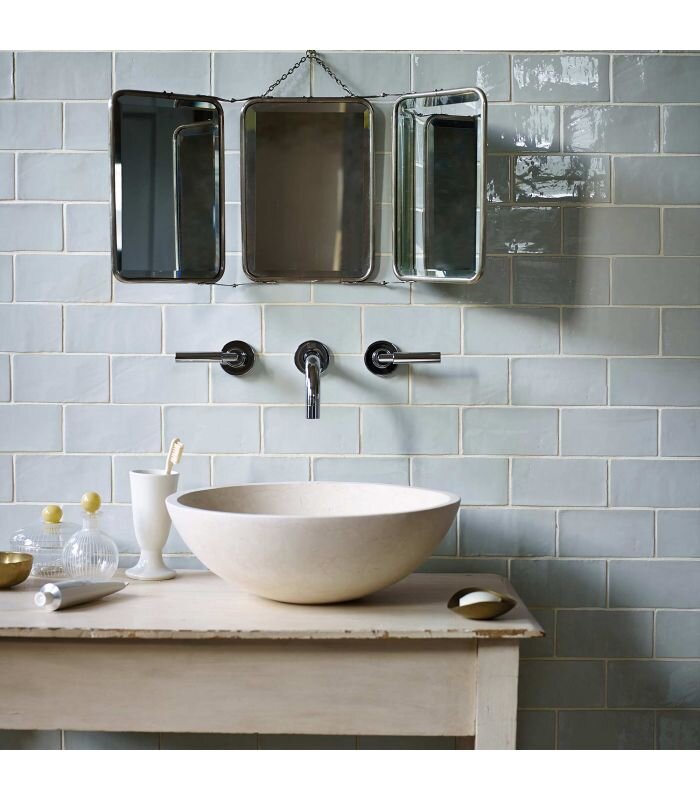Field Tile 101
If you think learning about tile is about as interesting as, well, watching grout dry, it’s time for a second look. As a former Ann Sacks exec, I couldn’t love it more. So this month, I’m delving into the nitty-gritty on one of my all-time favorite topics: field tile.
What Exactly is Field Tile?
Field tile is, essentially, the tile that covers the largest space in any room. It's not border or accent tile (like mosaics), but the tile that occupies the most expansive surface area. Typically, field tile starts in sizes like 2” x 4” and goes up to 24”x24”.
I am an avid user of Fireclay Tile. I love their foundations collection. Extremely versatile, excellent price point and well edited color palette.
The Savoy Collection from Ann Sacks is a very reasonably priced tile collection of field tile and smaller mosaic shapes. Prices for the Savoy Collection start around $16.00SF for material.
Field Tile Photo Courtesy of Ann Sacks
Field Tile Photo Courtesy of Fired Earth
Materials: So Many Options, So Many Things to Consider
When selecting the perfect tile for your space, you’ve got to consider its application first. Are you tiling a horizontal or vertical surface (in other words, are you tiling floors or walls)? Will it be in a remote area of the house like the master bathroom, or in a high-traffic one like the kitchen or front entryway? Are you tiling a backsplash, an expansive entryway or a bathroom with a steam shower? Establishing these key elements will help you determine the best type of tile for your project.
Ceramic is the most common type of tile, because it’s relatively inexpensive, simple to clean, and comes in a seemingly endless variety of shapes and sizes.
Porcelain is more durable, moisture resistant, and easier to maintain than ceramic, so it’s great for areas like showers, mudrooms and gyms.
Added bonus: Thanks to recent technological advancements, today’s porcelain is not your grandmother’s porcelain; it can handle cleaning supplies like bleach really well and is less likely to break down over time from all those heavy chemicals.
Natural stone tile, such as marble and limestone, is known to be stylish, exclusive and expensive. In fact, its perceived value is a large part of why builders use it.
Personally, I am a natural stone junkie. I can’t think of anything more timeless than limestone or honed marble. I tend to lean into the inconsistent textures, and variation in color. To me, the natural patina that evolves over time is like a well-worn leather ottoman. Honed stone is far easier to maintain than the polished versions.
My advice: Do your research. Stone may be the perfect material for your space but don’t assume that it is without weighing in on whether or not you like the elements that come with natural stone.
Lagos Azul Limestone Flooring | Photo from Griffin Design Source
Slab Flooring Thassos Honed Marble | Photo from Griffin Design Source
Glass often makes spaces feel fresh, contemporary and larger than their actual size; however, its translucent surface can also make grease spots and other marks more prominent. That’s why, for backsplashes, I avoid glass tile at all costs. I also avoid glass in steam showers. Unless your glass tile is perfectly back buttered you can see trowel marks. Additionally, moisture may creep behind the glass tiles in a steam shower setting. As soon as you get moisture behind the glass, mold rears its ugly head. Not only will you and your guests see it, but the glass tiles may eventually pop off the wall. Not okay.
Photo Courtesy of Walker Zanger










